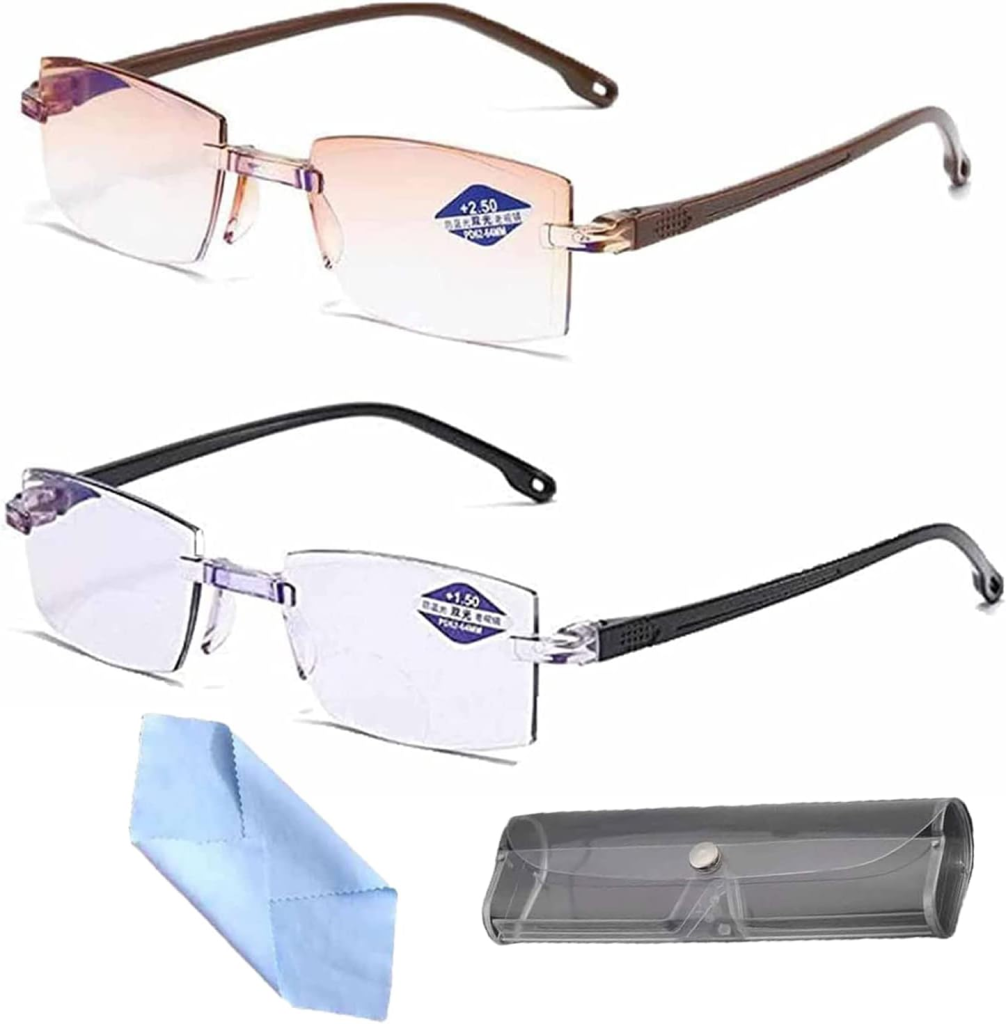Hilipert glasses brands itself as the “world’s first adjustable reading glasses,” claiming to combine autofocus lenses, LED lighting, blue‑light filtration, and anti‑glare tech in one lightweight frame. Marketed extensively via ads and affiliate sites, they promise seamless transitions between focal distances, reduced eye strain, and premium durability. But do these claims reflect real innovation or clever marketing masking low-cost hardware?
In this review, I’ll analyze what Hilipert claims, how the glasses supposedly work, assess the scientific and user evidence, flag major marketing red flags, and determine whether this product is worthwhile or better skipped.
Key Takeaways
- Advertised features include autofocus or dual-focus lenses, built-in LED lighting, blue-light blocking, and ergonomic, lightweight frames.
- Claims of progressive, autofocus liquid‑crystal lenses are contradicted by numerous user reports of abrupt visual zones and poor clarity.
- No clinical studies back the autofocus or health benefits; promotional language is unsupported by documented evidence.
- Multiple independent reviews and Reddit feedback cite poor build quality, uncomfortable fit, and non-functioning features.
- Aggressive marketing with discount urgency and limited return windows raise reliability issues.

What Is Hilipert Intelligent Reading Glasses?
Hilipert offers “adjustable” reading glasses that claim to allow users to change the magnification from +0.5D to +4.0D with a button or dial. They are sold online via brand websites or affiliates, promising benefits like smart zoom technology, blue-light blocking, waterproof and scratch-resistant lenses, and built-in brightness LEDs. Products are heavily marketed through social media ads, often at prices between $60–120 USD, with touted 50% discounts and risk-free guarantees.
How It Claims to Work
According to brand materials, the glasses use liquid-crystal adjustable lenses or dual-focus technology allowing seamless focus shifts between near reading and distance sight. Supplemental features include integrated LED lighting for reading in low light, anti-glare and blue light filtering coatings, and ultra-light flexible frames designed for extended use. The adjustment mechanism allegedly enables instant power change without swapping eyeglasses.
The Reality vs. the Claims
- There is no verifiable evidence that the glasses use true autofocus or LC lenses; experts note abrupt focal zone shifts instead of smooth vision gradients.
- Independent user reviewers describe noticeable focal “lines” or jumps between near and distance zones—characteristic of cheap progressive lenses, not smooth variable focus.
- Several reviews highlight flimsy build, uncomfortable nose bridges, sharp plastic edges, and frequent misfitting on diverse face shapes.
- Battery-powered features like LED lights and purported autofocus work intermittently or not at all, according to user experiences.
- Despite marketing claims of blue light and anti-glare protection, reviews report hazy or cloudy optics that degrade visibility rather than enhance it.
Verifiable testimonials are nearly absent, as most product sites feature generic praise with no independent evidence or detailed testing.
Red Flags To Consider
No Technical Validation or Clinical Testing
Claims of “intelligent zoom” and progressive focal adjustment lack any referenced patents, studies, or optical lab reports.
Poor Build and Vision Quality
Users report uncomfortable fit, sharp frames, distorted or cloudy lenses, and focal zones that force awkward head tilts.
Aggressive Marketing and Discount Tactics
Frequent pop-ups, countdown timers, and limited-time offers suggest marketing funnels rather than customer-centric retail.
Nontransparent Returns and Warranty
Limited or unclear return policies and reliance on affiliate seller channels undermine long-term reliability.
Misleading Visual Claims
The term “autofocus” is used loosely, with no clarity on actual optical mechanisms, quality issues significantly reduce usability.
Does It Actually Work?
In real-world use, Hilipert Intelligent Reading Glasses fall short of their marketing. The foreshadowed autofocus or adaptive focus seldom materializes; instead, users report jarring focal transitions that mimic cheap progressive lenses. LED lights may work sporadically, but often without real utility. Eye strain remains unchanged, or even worsens due to low clarity or frame discomfort.
While some buyers appreciate the lightweight feel and basic magnification, most usability issues outweigh minor benefits. Overall, these glasses offer generic cheap vision corrections wrapped in aspirational hype.
Where to Buy & Price Point
- Often sold through independent Shopify storefronts or brand microsites.
- Pricing ranges from $60 to $120 USD, frequently marketed with steep “50% off” discounts.
- Return and warranty policies vary by seller; many rely on limited 30-day returns or auto-subscription upsells.
Alternatives
- Standard ready-made readers (+1.0 to +3.0) from Amazon or retail stores—fully prescription-free and low-cost.
- Presbyopia reading glasses from reputable brands or eye clinics with proper optical power.
- Classic progressive lenses via prescription glasses for seamless vision transitions.
- Dedicated LED clip-on reading lights paired with quality readers instead of integrated electronics.
What To Do If You Got Scammed
Get a Refund
Dispute any unauthorized charges or suspect purchases using bank statements and communication records as evidence.
Cancel Your Card
Stop recurring billing immediately by canceling the card used for purchase.
Request a New Card
Contact your bank to issue a replacement card, officially disputing the flawed transaction.
Report the Scam
- IC3.gov – For U.S. consumers
- File with your country’s consumer protection agency
- Submit a complaint to the Better Business Bureau if purchased from a U.S.-based seller
Conclusion
Hilipert Intelligent Reading Glasses aim to offer futuristic reading solutions with autofocus, blue-light filtering, and LED lighting, but they do not deliver. Reviews consistently cite poor optical quality, flimsy construction, and misleading feature claims. There is no credible technical validation or clinical backing.
Verdict: Not recommended. If you need reading support, stick to trusted options with transparent optics and no-tech reliability.
Also Read – AmzApplication.com Scam Review: 5 Solid Reasons Why You Should Be Cautious!
